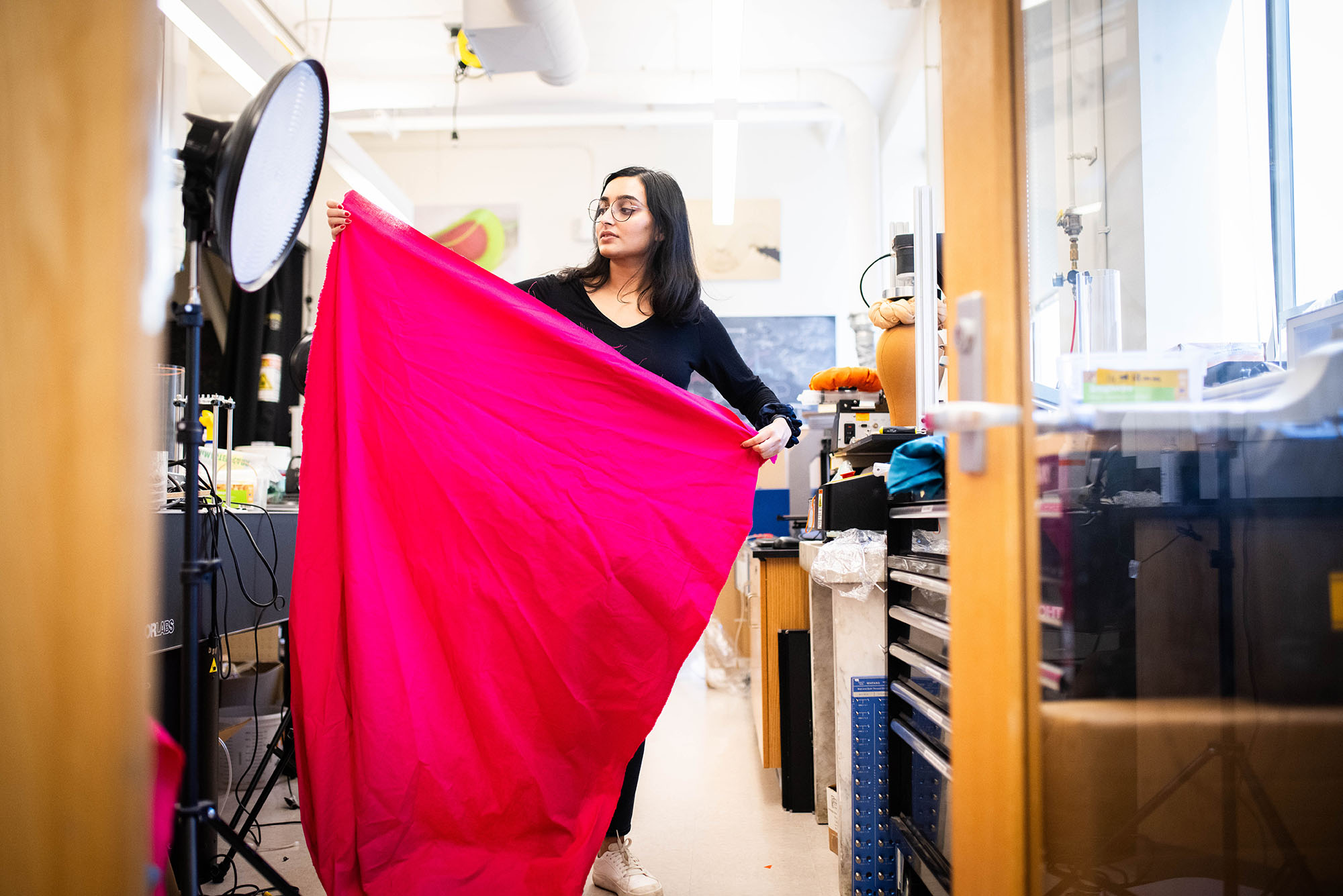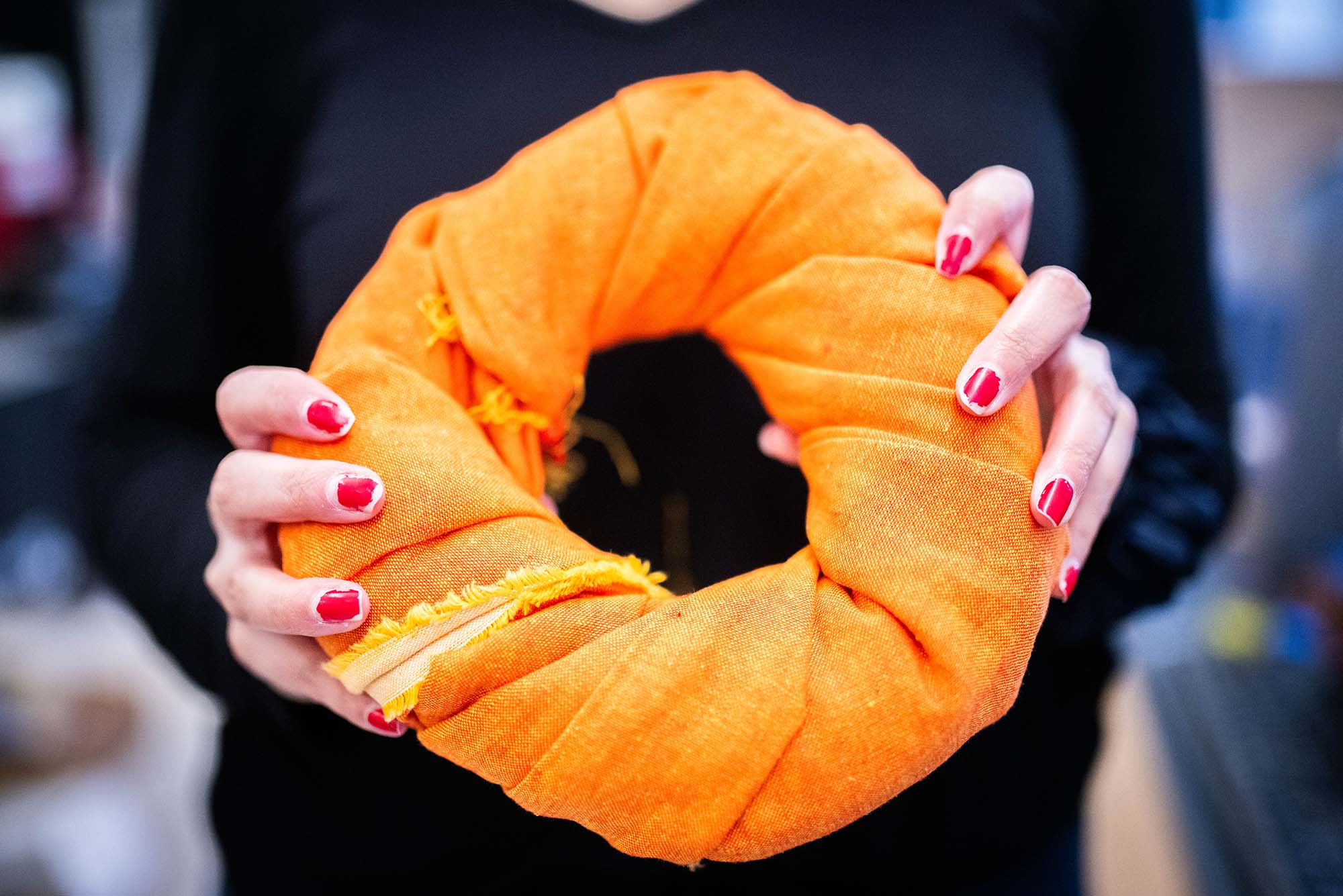How Do People Carry Such Heavy Loads on Their Heads?
BU mechanical engineering student Sanika D. Barve is studying the fabric rings head carriers, mostly women in rural communities, use to distribute and balance weight
How Do People Carry Such Heavy Loads on Their Heads?
How Do People Carry Such Heavy Loads on Their Heads?
Every summer as a kid, Sanika D. Barve would leave her home in Cincinnati to spend a few months with her grandparents in Pune, India. She’d hang out with family, travel, go to classes—and shop with her grandmother at the local bazaar. As she ran from stall to stall, Barve would swerve between women balancing baskets on their heads that were brimming with food and household products: mangoes, sugar cane, books, and even bricks.
Years later, making the same trip as an adult—and as a doctoral student in Boston University’s College of Engineering—Barve wondered how the women did it. How did they carry such heavy loads while pivoting around crowds of shoppers and dodging dashing children? What role did the fabric rings she’d noticed they wore on their heads—almost like crowns—have in distributing the weight and cushioning the loads?
Barve (ENG’25) decided finding out would make the perfect engineering research project. For the past two years, she’s been studying how different types of fabric rings—some twisted, some simply wrapped—help people carry a variety of loads on their heads, from heavy pots of water to ever-shifting bags of rice.

“We’re trying to understand why certain designs are best fit for specific loads,” says Barve. “Predominantly, this technique is used by women in rural agricultural communities. They already understand how to wrap the textile ring depending on what they’re about to carry and its weight; my goal is to understand why they wrap it the way they do—why is that optimal engineering?”
Her findings could have implications for how fabrics might be used in a range of other applications, from jolt-resistant packages to tough-wearing athletic gear.
The Mechanical Properties of Fabrics
Head carrying has been around for centuries, from Asia to Africa to Europe to the Americas—and so have circular rings to help cushion and distribute the load. Some are made from plants or leaves, but many from simple fabrics. During her market trips as a child, Barve most commonly saw two versions of the textile ring: one made by repeatedly twisting and wrapping fabric into a stiff doughnut shape, another by folding and wrapping it into a soft circle.
In BU’s Mechanics of Slender Structures lab, Barve has been compressing rings using an Instron mechanical testing machine, monitoring how they react to the application of different loads and forces. She’s also crushed large fabric swatches and pushed on strips of twisted fabric to see how they bend under pressure—adding additional twists to track any changes. The lab is led by Barve’s mentor, Douglas P. Holmes, an ENG associate professor of mechanical engineering.
Through her experiments, Barve has found the twisted fabric ring works best at carrying and balancing containers and pots: “It allows the gravitational energy from the load to be distributed among the twists,” she says. “So, it’s much better for heavier, very rigid objects.” The wrap design, by contrast, is well suited to squishy, pliable loads, like sacks of rice.

“The rice will shift around in the sack and the object is going to change shape as you walk,” says Barve, who recently presented her work at the American Physical Society’s March Meeting 2024. “The wrapped rings are better for that—since they’re not twisted, they can conform to the different shapes of the object as you move. They cushion around the object, which stabilizes it rather than just bearing all that load.”
Barve’s broader interest is in how the design of fabrics affects their mechanical properties. “I want people to look at textiles as engineering structures,” she says. But she isn’t sure yet whether to use her expertise in an academic or an industry career after completing her PhD. For now, she’s continuing to examine the fabric rings, stress-testing them in the lab—even wearing them for a more qualitative assessment of their properties.
“When it comes to research like this, there’s a lot to explore—I like to call it mechanical anthropology,” says Barve. “It’s really important to acknowledge we’re not discovering something new. Women have come up with this for thousands of years and I’d like to shed light on the day-to-day engineering they do. It would be incredible to just document that in a scientific way.”
Watch the video above to see Barve test different textile rings.




Comments & Discussion
Boston University moderates comments to facilitate an informed, substantive, civil conversation. Abusive, profane, self-promotional, misleading, incoherent or off-topic comments will be rejected. Moderators are staffed during regular business hours (EST) and can only accept comments written in English. Statistics or facts must include a citation or a link to the citation.